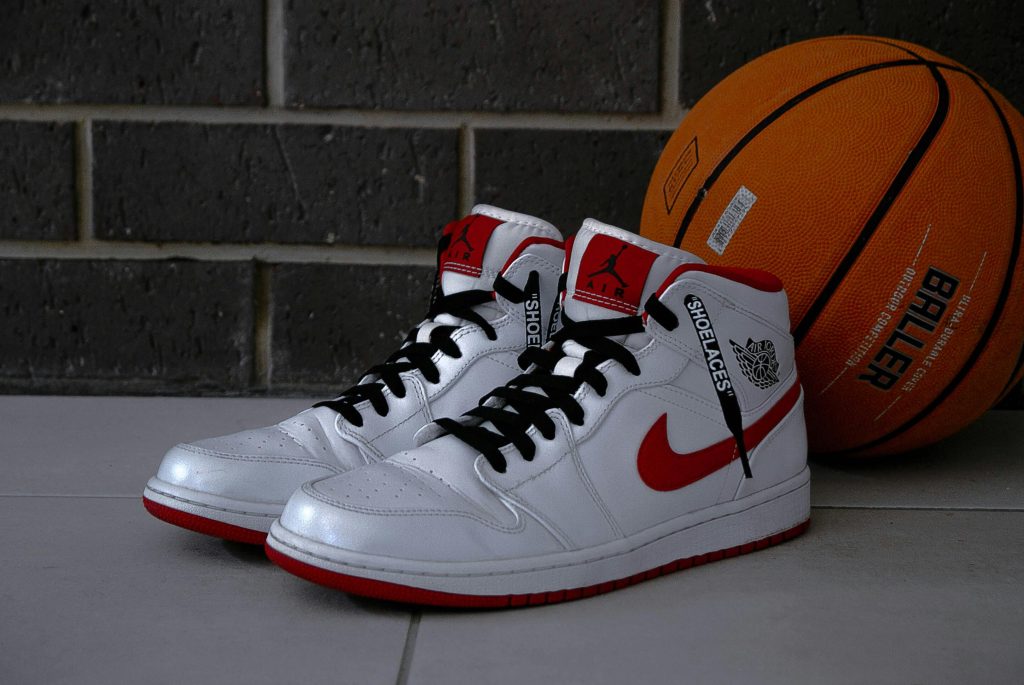You must have heard the term Marketing and Branding quite often. But have you ever tried delving deeper into what exactly they mean? In the realms of Business Strategy and Management, Marketing and Branding are very common terms. Both the terms are related and largely understood to be the same. But one must know that though both the terms feature under the larger area of Business Strategy, they are very different from each other. If you are someone working in either of these fields, a thorough understanding of the overlaps and distinctions of the two terms is very important. Knowledge about the nuances of Marketing and Branding will help you work better in both areas.
In this article, we will look at What the terms – Marketing, and Branding mean, some examples of what the two look like as output and what are their key differences.
WHAT IS MARKETING?
Marketing is the process of promoting and selling products or services. Marketing is like an umbrella term that encompasses disciplines including Market research, Advertising, Sales, and even Branding. The basic aim of Marketing is to use methods, tools, and practices to communicate your message about the product to potential customers, drive their interest, and engagement, and finally turn them into customers. It may include tactics such as Advertising through Radio, Television, Public Relations or Event Marketing, Sales Promotions, Word of Mouth, recognizable presence on Social Media platforms, Brand Awareness campaigns, etc. Most of the time, a Company’s Marketing strategy is a combination of all these modes. The significance of even a segment of Marketing can be understood through statistics. According to WebFx, 75% of Internet users research brands on Social media. 71% of people who have appositive brand interaction on Social media will recommend that brand to others as well.
The process of Marketing can be easily understood through examples. Let us look at certain examples to understand better what Marketing is.
Cadbury –

We are all familiar with the sweet and touching Cadbury advertisements. With the tagline ‘Kuch Acha Ho Jaye, Kuch Meetha Ho Jaye’, Cadbury placed their product as an alternative to traditional desserts. The advertisement made an emotional appeal by showing families enjoying Cadbury together. Apart from that, they also aired advertisements featuring couples and kids to target all of their target audience. They also brought out a variety of products, made the pricing very affordable, made availability very easy, promoted through celebrities and sponsorship, and maintained an engaging Social Media presence. Hence, they successfully amalgamated all the elements of Marketing Strategy and successfully captured a large market share in countries like India.
Surf Excel –

Another brand that is an exemplar in the area of Marketing is Surf Excel. Surf Excel also uses emotional appeal showing familial bonds in their advertisements. They also opt for a Storytelling-like script that engages audiences. They also aim at giving a social message through their advertisements and tagline ‘Daag ache hain’.
Added to this, they manufacture products in different sizes and price ranges making the product accessible and affordable. With an innovative Marketing Strategy, they have been able to capture an impressive market share in a highly elastic market such as India despite the presence of many competitors.
You may also like reading In-House vs. Agency Marketing | 9 Factors to Consider
WHAT IS BRANDING?
Branding, on the other hand, is a particular segment of Marketing. It is the practice of shaping a business’ unique brand identity or image that customers identify with. This process involves several elements such as a name, logo, tagline, visual elements, the appearance of the product, fragrances, font, etc. which are unique to your product or company. The idea associated with branding is to create a lasting image of your product in the customer’s mind. It also helps in establishing a loyal consumer base. You might have seen fake copies of certain products such as fancy bags or shoes. Have you ever wondered why? It is majorly because people are attracted to the brand value of a product, which is often more than their use value. In the case of luxury products, the brand of a product is often seen as a status symbol, an excellent example being cars.
We can look at companies that have successfully established themselves as Brands and are easily identified by their customers.
McDonald’s –

McDonald’s has emerged as a major food chain giant in many countries across the globe. It has a consistent brand identity – the familiar golden arches with bright red and yellow colors that stand out easily. They also focus much on pricing, customer satisfaction, cleanliness, etc. All this combined with the tagline ‘I’m lovin’ it’ has helped them establish themselves as a quick food outlet, offers great value, and is accessible easily through their several outlets and online food delivery services.
Himalaya –

Himalaya is another brand that has positioned its image very well in consumer’s minds. Their main aim as displayed by the tagline ‘Wellness in Everydrop’ is to position themselves as a Natural brand. This is also evident by the predominant use of the color green in most of its packaging. They also emphasized being one of the oldest wellness brands indigenous to India. Al, this culminated Himalaya to have made such a brand value that it is very easy to identify the brand.
9 KEY DIFFERENCE BETWEEN MARKETING AND BRANDING –
1. Different processes –
Branding and Marketing are two interrelated but entirely different processes. Branding is the process of creating a unique identity for a company or a product that is unique to them where whereas Marketing is the process of promoting the product or service to potential customers in various ways.
2. Order of execution –
The entire process of Business strategy includes both Branding and Marketing. But in this process as a whole, Branding comes first because it is essential to clearly define what a product is, how it is to be presented as a product to customers, etc. Marketing begins after Branding. After one is clear with how they want to portray their product, they start the execution part of it which is Marketing.
3. Change and Consistency –
Marketing is successful only if it is flexible enough to sustain and retain the customer’s interest in changing times. A good marketing strategy is constantly updated and follows the trends, and interests, and even starts trends through their innovation. Branding, on the other hand, should preferably be constant. Once a product is positioned as something and that image is etched onto the minds of customers, it is not a good idea to reposition a product. While some companies do reposition their products, it is done largely to tackle some bigger problems such as falling market share or profit, etc.
4. Objective and expected results –
Branding aims mainly at building a lasting emotional connection with customers, while Marketing is more about providing information about a product or service. Apart from that, Branding is focused on building a strong reputation and relationship with customers. Marketing, on the other hand, focuses on reaching and engaging potential customers.
5. Time required to Execute –
Branding, as mentioned above, is a long term and the results of the process also have a long-term impact. Once devised, a Branding Strategy need not be revamped now and then though some minor updates might be required. Marketing, unlike branding, focuses on short-term goals like generating leads or driving sales. It is driven towards getting immediate results. Considering that immediate goals keep changing, ways to achieve them must also change. Hence, a Marketing Strategy should be re-designed frequently.
6. Impact on Customers –
Though Marketing is a holistic process, it is aimed more at grabbing customer’s attention. A Marketing strategy involves using methods and tools to attract customers towards the product. But once customers get attracted to the product or service, Branding comes in. Branding helps customers understand what a product is and why should they buy a product.
7. Different modes –
A very important part of any kind of strategy is to choose the right medium for execution. Due to the availability of several modes for reaching customers, companies must focus on selecting a medium that fulfills their requirements and is the most efficient among the alternatives.
Modes to market a product include –
- Digital Mediums – Social Media Marketing, E-mail marketing, Pay-per-click advertising etc.
- Traditional Marketing – Print advertisement, Billboards, Radio advertisements, etc.
- Collaboration with influencers and celebrities
- Sponsorship
- Event Marketing
Common methods of Branding a product include –
- Visual Branding – Includes the use of logos, color schemes, fonts, symbols, etc.
- Storytelling – Includes creating an emotional connection by using a mix of facts and feelings to make a story around a company’s history, values, purpose, mission, etc.
- Loyalty programs – Initiation of programs and offers that reward customers. This is often done through a collection of Loyalty points, vouchers for shopping for a particular amount, etc.
- Brand Voice – Use a particular voice, tone, style, and music to communicate a message that is unique to you. Shows such as Big Boss, Takeshi’s Castle, etc. have used this method to brand and promote their services.
8. Outcomes –
Since both the processes are essentially different from each other along with differences in the modes of execution as well, their outcome also differs largely.
The outcome of Branding, if defined in one word, is Recognition. After Branding their product well, a company mainly establishes a unique identity in the market.
Marketing, contrary to Branding, leads to Engagement. Marketing creates opportunities to engage with the customers, transmit a meaningful message to them, and often persuades them to choose a particular product amongst alternative options.
9. Different subjects –
The subject of Branding is a product but the subject of Marketing is the customer. To reiterate, Branding largely involves knowing about the company or the product. It’s about what the company wants to look like to the customers and in what ways. Conversely, Marketing begins with an aim to understand their customers. Before even beginning its execution, Marketing Strategies need to devise ways to understand the market, the needs, preferences, behavior, motivations, etc. of the customers and accordingly give structure to their strategies.
Despite their differences, the synergy between Marketing and Branding is what one needs. While branding first establishes and positions the product in the eyes of customers in a particular way, Marketing starts with this identity and uses some methods and strategies to communicate the message to the buyers. Hence, the processes are complementary to each other.
Though the knowledge of the crucial but significant differences between Marketing and Branding is important, it is important to understand that our focus should be to discover ways in which we can balance both of them and get the most out of the process. One way to do this can be to align your Marketing strategy with Branding Strategy. For example, companies can try and develop messages, campaigns, etc. in a way that reflects and re-affirms their brand identity.
FAQs (Frequently Asked Questions) on Branding Vs. Marketing:
1. What is Branding?
Branding can be defined as the process of creating a unique identity for a business or a product that helps the customers differentiate it from other products.
2. Why is Branding important?
Branding helps in making your product recognizable and establishing a relationship with customers.
3. How can one develop a brand?
Developing a Brand is a long process that may involve deciding how you want to present your brand, understanding your target audience, developing brand elements, crafting a message that conveys information about your product and also establishes a connection with customers, build brand awareness, maintain consistency with product or service experience, gather feedback and polish the process through it to make it seamless.
4. What is Marketing?
Marketing can largely be defined as a process of promoting and selling products, services, etc. through several channels such as Digital mediums, traditional mediums, Sales, Public relations, etc.
5. Why is Marketing important?
Marketing is important as it allows companies to engage with their target audience, drive sales, and also build a loyal customer base.
6. How can one develop a Marketing Strategy?
Developing a Marketing Strategy involves thorough research and analysis. To develop a successful Marketing strategy one should first set clear goals and objectives. Then try and understand the target audience, analyze competitors and their respective strategies, develop your USP (Unique Selling Proposition), Select the right medium that suits your needs, develop an impactful message for customers, rightly distribute resources amongst various channels, execute your strategy and finally evaluate the impact and the reach through feedback from various channels.
Also Read 8 Reasons to Hire a Digital Marketing Agency (+4 Tips for Hiring One)



